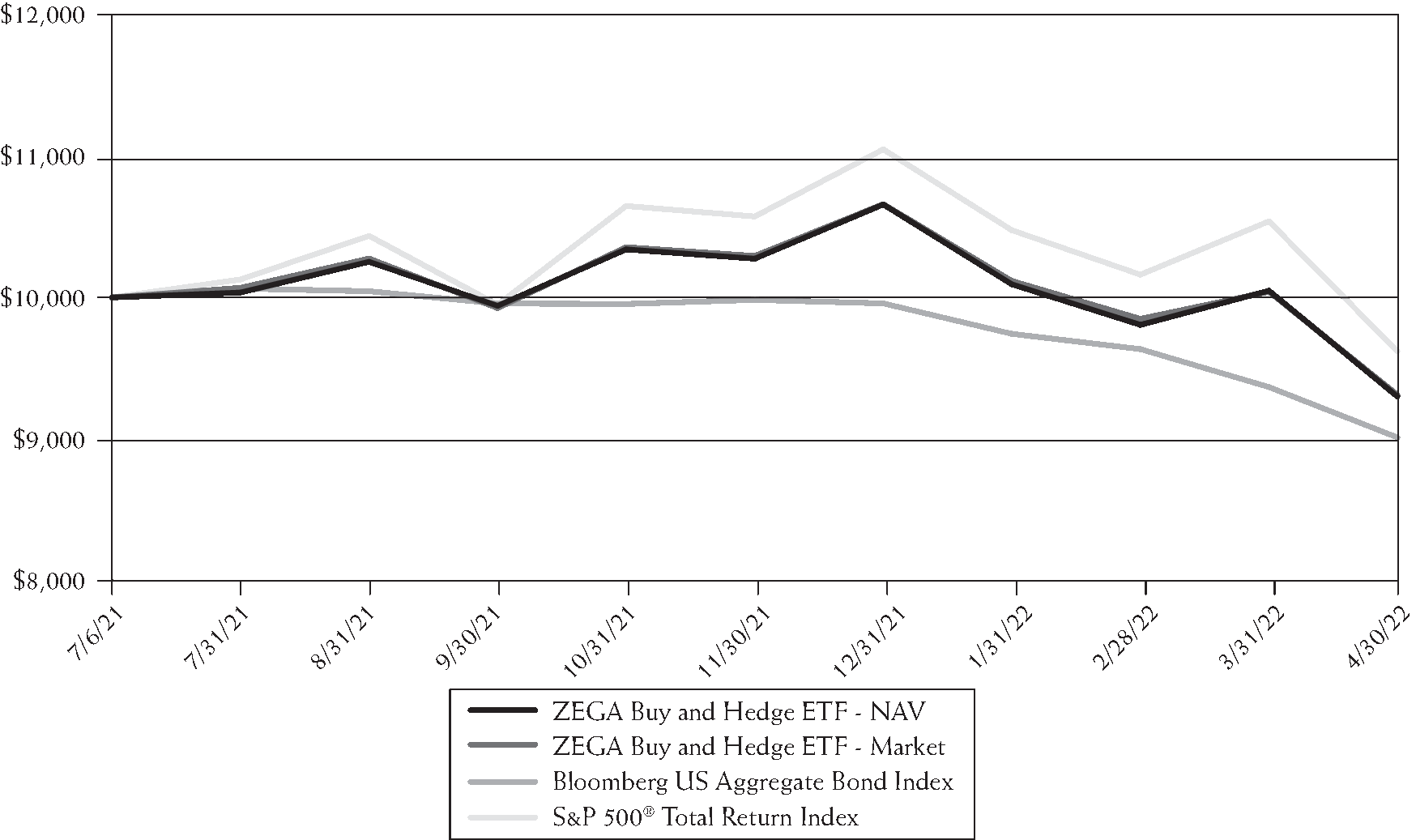Dear Shareholders,
When we developed the ZEGA Buy and Hedge ETF (the “Fund”) in 2021, our goal was to construct a portfolio that targets long-term equity returns via the S&P® 500 Index (the “S&P 500 Index”) while taking less risk.
There are two main steps in the process:
1) utilizing long call options on either the S&P 500 Index or the SPDR® S&P 500® ETF Trust that represent control of a commensurate notional value of equity exposure while limiting the equity losses to a -8% to -10% level over a 12-month period. At the same time targeting an upside capture of between 70% -75% over a 12-month period; and
2) building a portfolio of yield bearing securities to offset the cost of our long market exposure thus reducing our cost of hedging.
Call options are utilized due to the defined risk attribute thus putting a floor in the equity portion of the Fund.
At times hedges are instituted on all or part of the short-duration fixed income positions in the Fund’s portfolio and those positions may have gains or losses.
Performance Update
Since the Fund’s inception on July 6, 2021, we have seen the economic environment change. After a decades long period of benign inflation, in the wake of the global pandemic, supply chain disruption, and U.S. government stimulus, inflation surged to levels not seen since the 1980s.
In the period from inception on July 6th, 2021, to the end of 2021, the Fund gained as it participated with the S&P 500 Index and went on to make a new high. Commensurate with the goals of the Fund, it captured a portion of the upside after accounting for the cost of hedging.
As the market environment shifted, the S&P 500 Index sunk intraday into bear market territory (-20%) in mid-May 2022.
While corporate earnings on S&P 500 companies have risen in aggregate on a year-over-year basis, the multiple (forward price-to-earnings ratio1) declined as investors went through a re-rating of how much they would pay for future earnings.
In addition to the earnings recalibration, rising interest rates, along with the expectation of future rate hikes, contributed to this re-rating of future forecasted growth as well.
The Fund’s year-to-date total return was -12.60% from January 1, 2022, through the end of April (April 30, 2022) compared to its benchmark, the S&P 500 Index, which returned -12.90%.
The asset allocation in the Fund was designed to target a downside risk of -8% to -10% over a 1-year period. Since inception through April 30, 2022, the Fund has a total return of -7.01%. The Fund’s strategy performs best when equity markets go up or go down materially thus presenting the opportunity for rebalancing into options contracts at lower levels thus investing avoided losses.
During the past fiscal period, investors have experienced the drawdown and the cost of hedging to a point that is the least optimal environment for a hedged equity strategy.
The other contributing factor for the Fund was the negative effects of rising interest rates on the short-duration income yielding fixed income positions. This resulted in the yield portion of the Fund’s portfolio declining as interest rates increased.
While interest rates did result in a decline in the market value of bonds, due to the duration of the Fund’s portfolio averaging less than 2.5 years, the impact of rising rates was less impactful due to the lower duration.
The Fund’s hedges on the fixed income positions did offset some losses reducing overall drawdowns.
The Fund also utilized a strategy of writing options that are designed to replicate holding short-duration high yield. These are implemented within fixed risk parameters to limit losses should further pressure be put on short-duration high yield.
Due to retracements in fixed income pricing, the short put-spreads did not further reduce the cost of hedging in portfolios in the Fund.
With the declines in underlying stock indexes, the Fund experienced the negative effects of the cost of hedging plus a drawdown that did not significantly go beyond our hedging floor. This caused investors in the Fund to realize losses that were close to the losses over the same period in stock indexes.
A more optimal environment would see either equity declines much lower, which would mean reinvesting new long call options on the S&P 500 Index at even lower strike price levels. Alternatively, had stock indexes moved materially higher, thus capture potentially a good percentage of those moves.


